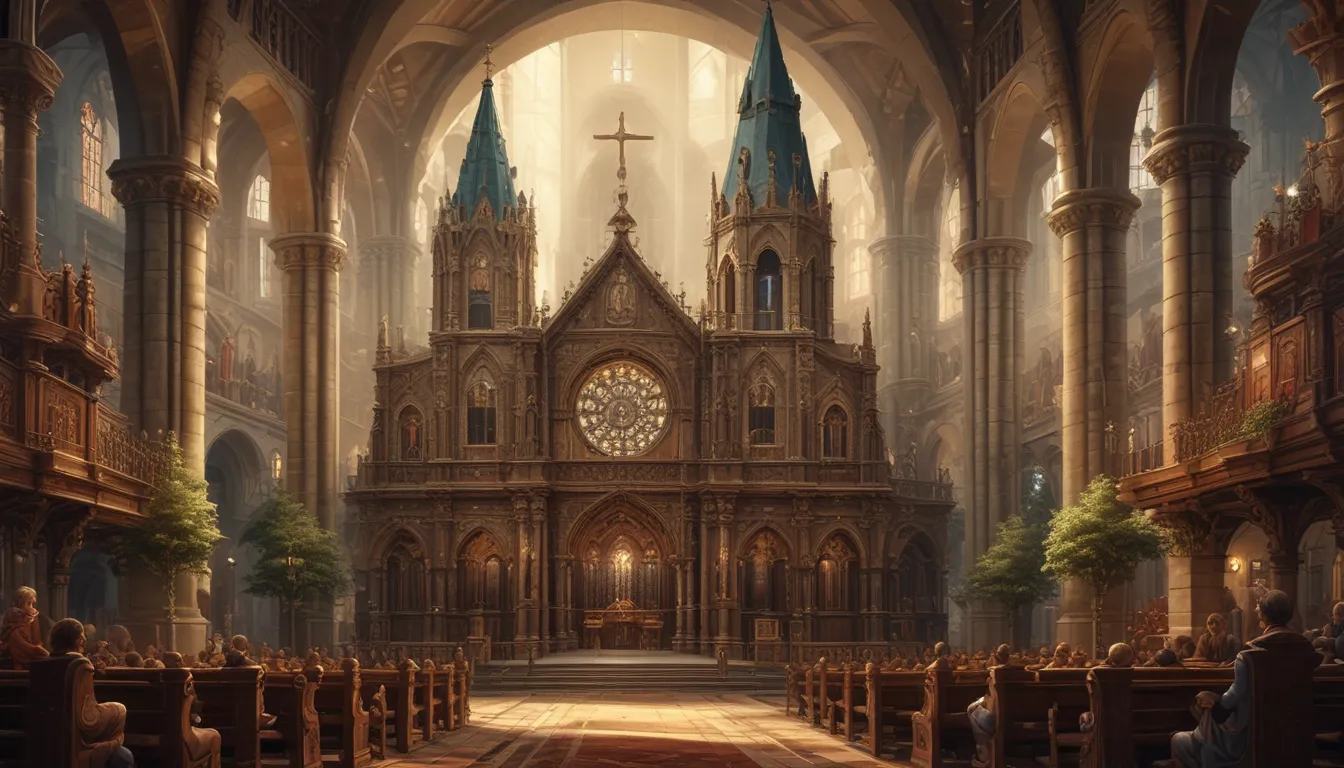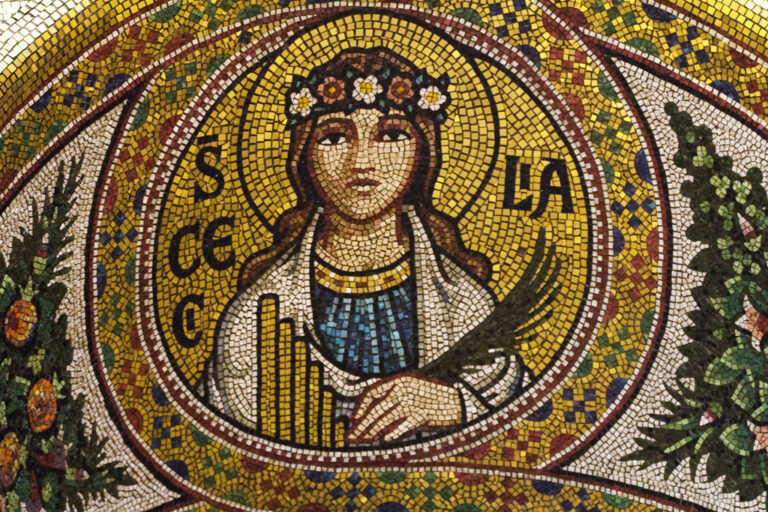The images in our articles may not match the content exactly. They are used to grab your attention, not to show the exact details in the text. The images complement the text but do not replace it.
Churches are more than just places of worship – they are also community centers that bring people together through social events, educational programs, and charitable initiatives. The oldest church dates back to the 3rd century, showcasing the enduring legacy of Christianity and the architectural styles of the time, offering a fascinating glimpse into the early Christian era. From the grandeur of Gothic cathedrals to the simplicity of rural chapels, churches showcase a diverse array of architectural styles, reflecting the cultural, historical, and religious influences of the regions where they are located.
The Oldest Church: A Glimpse into Early Christianity
The Dura-Europos church in Syria stands as the oldest church still standing today, dating back to the early 3rd century. This ancient structure provides a fascinating glimpse into the early Christian era and the architectural styles of the time, showcasing the enduring legacy of Christianity and the historical significance of early Christian communities.
A Journey Through Architectural Diversity
Churches come in various architectural styles, from the grand Gothic cathedrals adorned with intricate details to the humble rural chapels exuding simplicity. Each architectural style tells a story, reflecting the cultural, historical, and religious influences of the regions where the churches are located. Exploring these architectural marvels offers a captivating journey through different periods of history and the evolution of architectural techniques.
St. Peter’s Basilica: A Symbol of Grandeur
Located in the Vatican City, St. Peter’s Basilica stands as the largest church in the world, showcasing the grandeur of Renaissance architecture. This magnificent structure serves as a symbol of the Catholic Church’s cultural and religious heritage, drawing millions of visitors annually. St. Peter’s Basilica is a testament to the artistic and engineering marvels of the Renaissance period, captivating all who enter with its awe-inspiring beauty.
Churches as Community Hubs
Beyond their religious functions, churches serve as vital community centers, hosting social events, educational programs, and charitable initiatives. These multifaceted roles enable churches to foster a sense of unity and support within their communities, bringing people together in times of celebration and need. The community-centered approach of churches highlights their significance as hubs for social interaction and communal engagement, enriching the lives of those they serve.
The Resonating Symbolism of Church Bells
Church bells hold deep symbolic significance within the Christian tradition, serving as a means of communication, timekeeping, and religious symbolism. The resonating chimes of church bells evoke a sense of reverence and tradition, enriching the auditory landscape of church environments and signaling important moments within the religious calendar. Their melodic tolling transcends mere sound, carrying spiritual and cultural significance for congregations worldwide.
Enriching Worship Through Church Choirs
The tradition of church choirs dates back millennia, with evidence of choral singing found in early Christian liturgical practices. Church choirs continue to enrich worship services with their harmonious melodies and uplifting hymns, creating a vibrant musical tapestry that enhances the spiritual experience of congregants. The enduring tradition of church choirs underscores the timeless appeal of choral music in religious settings, uniting voices in praise and worship.
A Tapestry of Religious Art Within Churches
Throughout history, churches have served as prominent venues for religious art, featuring awe-inspiring frescoes, sculptures, stained glass windows, and intricate mosaics. These artistic masterpieces convey profound religious narratives and inspire contemplation among visitors, adding a layer of visual richness to the spiritual environment. The rich tapestry of religious art within churches reflects the enduring fusion of faith and artistic expression, creating a dynamic visual experience for all who behold it.
Churches: Guardians of Sacred Traditions
Churches uphold sacred traditions that have been passed down through generations, preserving rituals, sacraments, and theological teachings that form the cornerstone of religious identity. These enduring traditions serve as pillars of spiritual continuity and communal solidarity, linking present-day worshippers to the beliefs and practices of their predecessors. The preservation of sacred traditions within churches underscores their role as guardians of religious heritage and spiritual legacies, safeguarding the essence of faith for generations to come.
The Impact of Churches on History and Society
Churches have played pivotal roles in shaping historical events, serving as centers of influence, refuge, and cultural preservation. From the medieval era to modern times, churches have left an indelible mark on the course of history, influencing societal norms and political landscapes. The historical significance of churches underscores their enduring impact on the fabric of human civilization, illustrating their role as pillars of faith and history within communities worldwide.
Diverse Worship Practices Across Churches
Across denominations and regions, churches embrace diverse worship practices, encompassing a spectrum of liturgical traditions, musical styles, and ceremonial rituals. This diversity reflects the dynamic nature of religious expression within the global church community, honoring the unique cultural heritage and spiritual traditions of worshippers. The inclusive approach to worship within churches fosters a rich tapestry of spiritual experiences and cultural traditions, celebrating the unity found in diversity within the body of believers.
Conclusion
In conclusion, the church stands as a timeless symbol of faith, community, and cultural heritage, enriching the lives of millions worldwide. From the architectural wonders that grace skylines to the spiritual sanctuaries that harbor sacred traditions, churches continue to captivate and inspire individuals across the globe. As centers of communal gathering, spiritual guidance, and cultural preservation, churches embody the essence of human connection and the pursuit of transcendence, inviting all to partake in their enduring legacy.
FAQs
What is the significance of church architecture?
Church architecture reflects the cultural and religious values of a community, often incorporating symbolic elements that convey spiritual meanings. The design and layout of churches are intended to inspire reverence and facilitate communal worship, creating a sacred space for spiritual reflection and connection.
How do churches contribute to local communities?
Churches often serve as hubs for charitable activities, providing support to the less fortunate through food drives, shelters, and community outreach programs. Additionally, they offer a sense of belonging and solidarity, fostering a supportive environment for individuals and families within the community.
Our commitment to delivering trustworthy and engaging content is at the heart of what we do. Each fact on our site is contributed by real users like you, bringing a wealth of diverse insights and information. To ensure the highest standards of accuracy and reliability, our dedicated editors meticulously review each submission. This process guarantees that the facts we share are not only fascinating but also credible. Trust in our commitment to quality and authenticity as you explore and learn with us.






